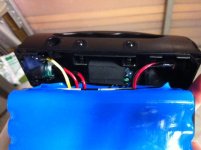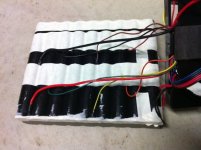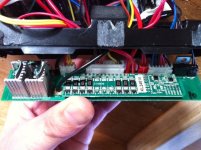Hi All
My partner has a Panasonic 24V 12Ah Li-ion battery on her Montego 200W Ebike. The bike was cutting power regularly during hill climbing so I did (what seemed like a conservative) shunt mod on the controller. The bike was going much better after this mod and we were quite happy with it for about a month. I do not know if it is related to this mod but all of a sudden about a month after doing the mod, the battery will no longer take a charge. The battery charger is just a simple transformer type with a green LED for when it is not connected or has a full battery and a red LED during charging. The battery still has 25.5V and only drops to around 24.5V under load which indicates that the battery is low and needs charging, but it is not dead. The charger is putting out 29.7 V which is correct for its specifications. When I put a multimeter on the charging socket on the battery I get no reading at all (0V), is that normal? I opened the battery and all the connections that I could easily see seem to be intact and in good condition. The bike still runs fine, it just will not charge.
Does anyone know what could be happening? Can the BMS shut down the charging circuit like this if, for instance, current draw is too high?
My partner has a Panasonic 24V 12Ah Li-ion battery on her Montego 200W Ebike. The bike was cutting power regularly during hill climbing so I did (what seemed like a conservative) shunt mod on the controller. The bike was going much better after this mod and we were quite happy with it for about a month. I do not know if it is related to this mod but all of a sudden about a month after doing the mod, the battery will no longer take a charge. The battery charger is just a simple transformer type with a green LED for when it is not connected or has a full battery and a red LED during charging. The battery still has 25.5V and only drops to around 24.5V under load which indicates that the battery is low and needs charging, but it is not dead. The charger is putting out 29.7 V which is correct for its specifications. When I put a multimeter on the charging socket on the battery I get no reading at all (0V), is that normal? I opened the battery and all the connections that I could easily see seem to be intact and in good condition. The bike still runs fine, it just will not charge.
Does anyone know what could be happening? Can the BMS shut down the charging circuit like this if, for instance, current draw is too high?




